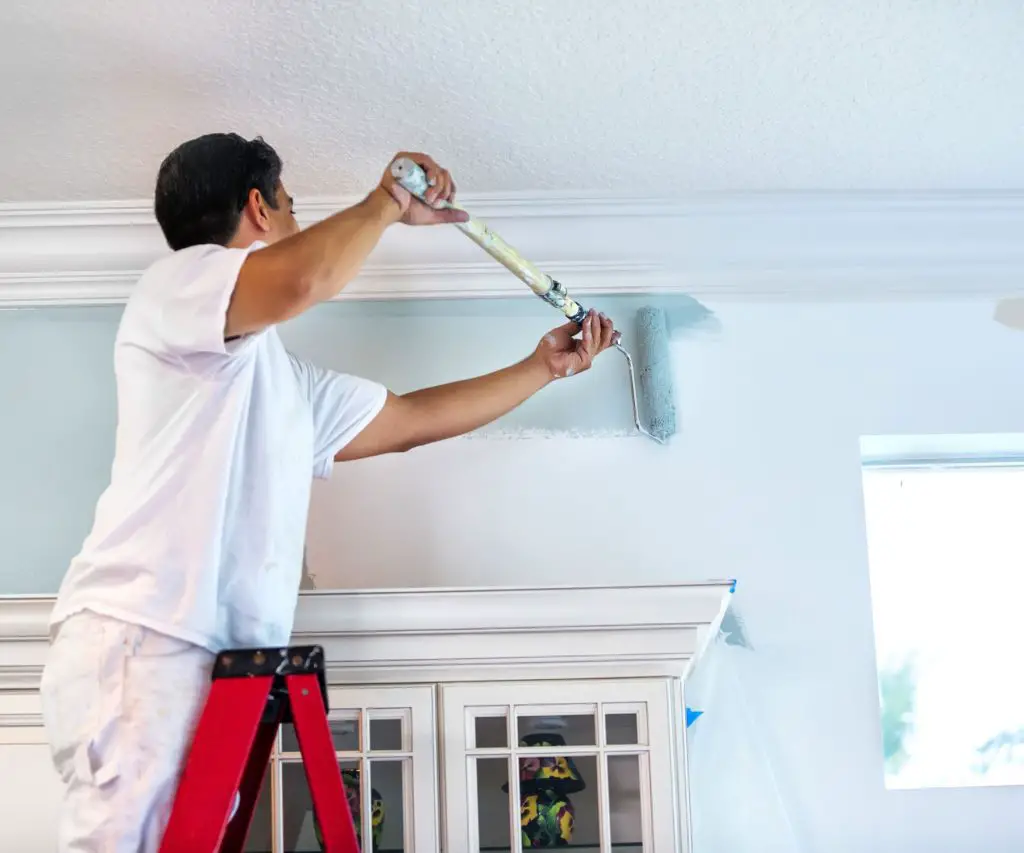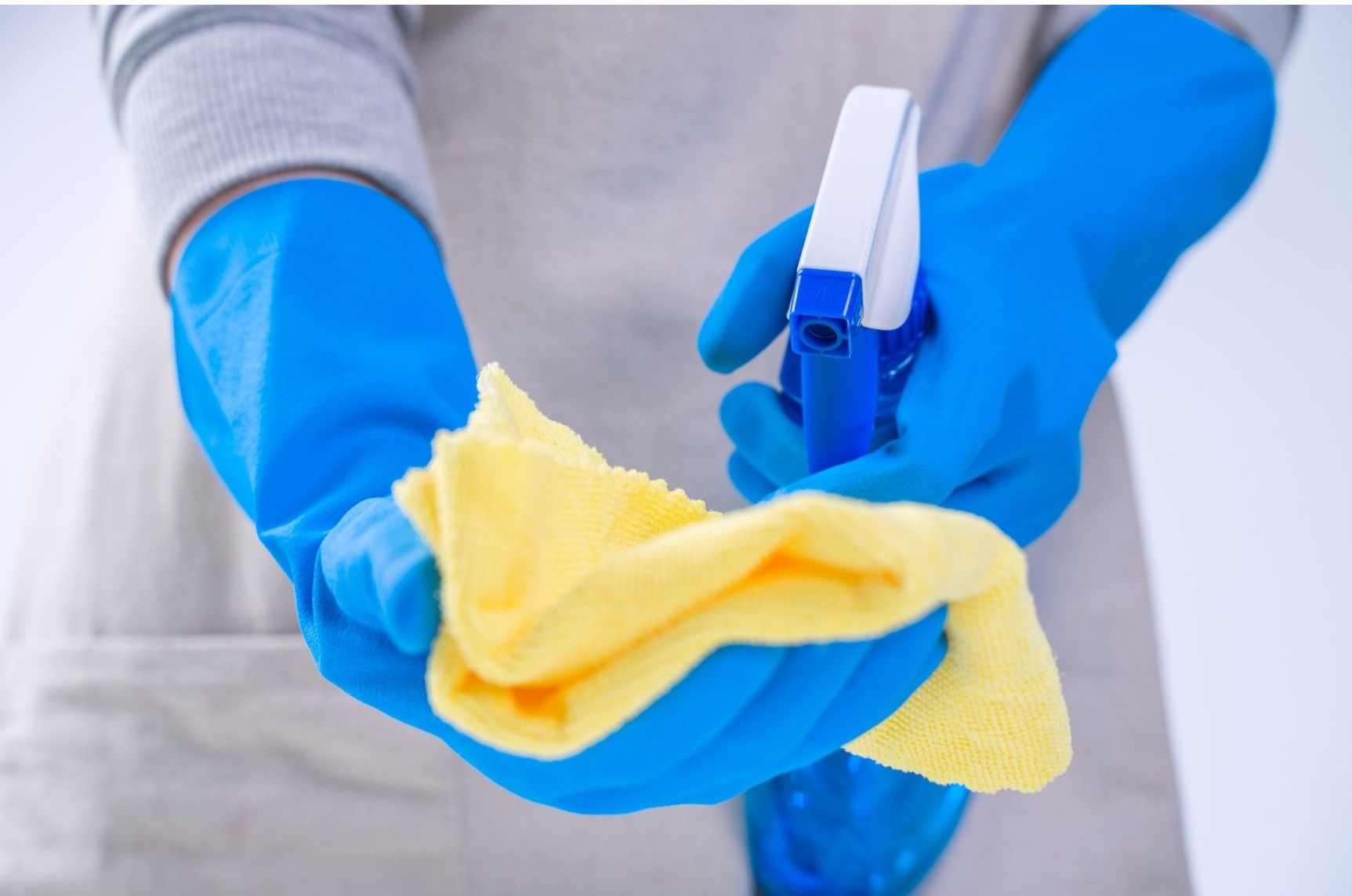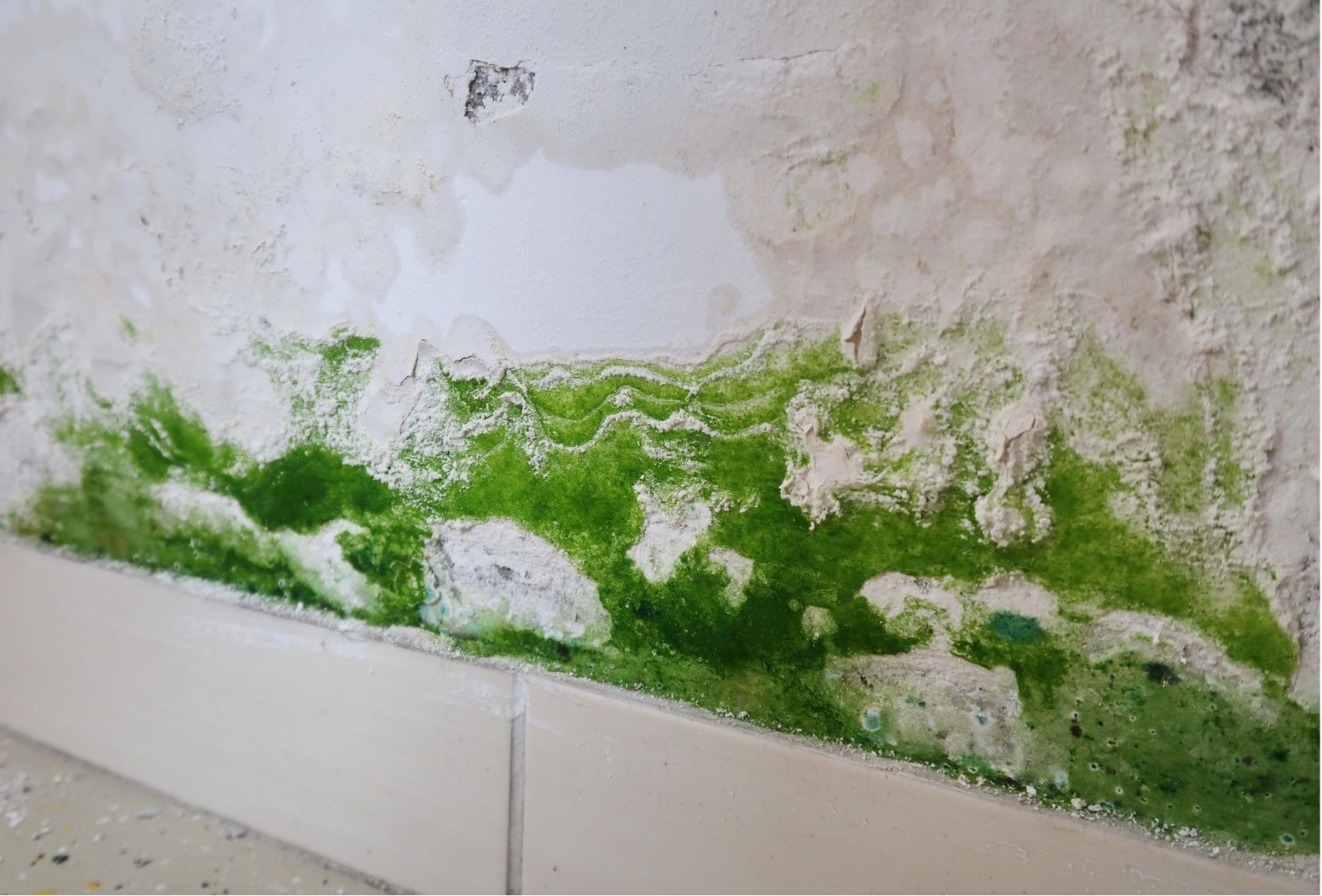Table of Contents
How to Tell If Mold Has Been Painted Over
Discovering mold in your home can be worrying. Mold can damage your possessions, impact your health, and be costly to remove. Often, mold is hidden behind walls or under materials where it can’t be seen. One common way mold gets covered up is by painting over it. Painting over mold might seem like an easy fix, but it doesn’t actually get rid of the mold or stop it from spreading. Here’s how to tell if mold has been painted over in your home.
Signs Mold Has Been Painted Over
There are a few key signs that can indicate mold has been painted over rather than properly removed:
- Paint discoloration or bubbling. Mold can cause paint to change color, often showing up as dark spots or patches. It may also cause paint to bubble up or peel away. This happens because mold eats away at the paint and causes it to separate from the surface underneath.
- Musty odors. Mold has a characteristic musty, earthy smell. If you smell this odor in an area that seems freshly painted, it could mean mold was painted over rather than remediated.
- Recurring mold. If the same area develops mold again after being painted over, it likely means mold was not fully removed before painting. Mold can continue to grow under paint and eventually make its way through.
- Moisture issues. Common moisture issues like leaks, flooding, or excess humidity can feed mold growth. If known moisture problems are present along with other signs of paint over mold, it’s very likely mold is present under the paint.
- Allergy symptoms. Allergies, asthma, and other respiratory complaints can be signs of a hidden mold problem. If you experience allergy symptoms in the area of suspicious paint even after it’s been painted over, mold may be lurking underneath.
Dangers of Painting Over Mold
Why is it so important to fully remove mold rather than simply painting over it? Painting over mold may seem like a quick and affordable short-term fix, but it comes with major risks.
- Hazardous spores can spread. Mold releases tiny spores that contain allergens and irritants. Painting over mold won’t contain the spores – they can still spread through the air to other areas. This continues your exposure.
- Mold may come back quickly. Mold can eat through paint because mold needs moisture to thrive. Painting provides moisture condensation underneath, encouraging the mold’s return.
- Hidden mold growth is harder to address. Covered up mold is more likely to spread out of sight before being caught. This makes addressing the source of moisture feeding it and fully killing the mold more difficult.
- Structural damage can worsen. Left unchecked, expanding mold growth under paint can eventually cause wood rot, weaken drywall, and lead to costly structural issues.
- Health risks increase. Breathing in mold spores over time can cause respiratory infections, trigger allergy and asthma symptoms, and worsen chronic conditions like lung disease.
For these reasons, painting over mold provides only the illusion of a fix. Properly identifying and remediating any mold is critical.
Inspecting for Mold Under Paint
If you suspect paint may be hiding mold, a professional inspection is recommended. Mold testing specialists have the expertise and tools to identify mold behind paint and building materials. Here are some methods they may use:
- Moisture meter: A moisture meter can detect excess moisture in walls and other materials that may be feeding mold growth. High moisture readings suggest mold may be present.
- Borescope: A small camera on the end of a flexible tube, known as a borescope, can be inserted into walls or under materials to visually look for mold.
- Dye staining: Stains that react with mold can be applied to painted areas to indicate the presence of mold under the surface.
- Bulk/surface sampling: Small samples of building materials may be collected and sent to a lab to test for mold. Swab or tape samples can also be taken from surfaces.
- Air sampling: Air quality samples can detect elevated mold spore levels, which may indicate hidden mold reservoirs.
These methods allow inspectors to pinpoint areas affected by mold growth and determine if paint has been applied over mold. This helps guide full mold remediation.
Safely Removing Mold from Under Paint
If you confirm that paint has been applied over mold, professional mold remediation is advised. Here are general guidelines mold removal experts may follow to eliminate the mold problem:
- Isolate the affected area from the rest of the home using plastic sheeting. This helps prevent spores from spreading during the process.
- Remove all materials where mold growth has been detected. This may involve stripping down to the studs in severe cases. Properly dispose of moldy porous materials that can’t be adequately cleaned.
- Clean and dry any surfaces free of mold using detergent and water or EPA-registered antimicrobial products. Completely dry all areas, as moisture feeds mold growth.
- Make any necessary repairs to eliminate moisture sources like leaks that allowed mold to form. Improving ventilation may also be needed.
- Apply mold-inhibiting paints or primers to treated areas before rebuilding. These help prevent mold from recurring.
Proper containment, removal, and disposal protocols ensure mold growth is eliminated and your health protected. Always have professionals do this hazardous work, especially for large infestations.
Preventing Mold from Developing Under Paint
To avoid dealing with paint over mold again, prevention is key. Here are some tips to help keep your home mold-free:
- Maintain low indoor humidity, ideally between 30-50%. Use dehumidifiers, exhaust fans, and air conditioning as needed.
- Act quickly to clean up spills, condensation, and leaks. Don’t let excess moisture linger.
- Improve airflow by ventilating attics, keeping HVAC drip pans clean, and using fans in humid areas like laundry rooms or bathrooms.
- Insulate cold surfaces like pipes and exterior walls to reduce condensation that allows mold to form.
- Routinely check for hidden leaks, including inside walls or under floors and ceilings where moisture may accumulate unnoticed.
- Clean bathrooms with mold-killing products and keep grout and caulk in tile areas fresh.
Catching and addressing moisture issues right away keeps mold from taking hold in your home. Pay attention to any musty odors or allergy symptoms and inspect paint regularly for early signs of mold. Taking proactive anti-mold measures will help ensure you never have to deal with paint over mold again.
 Frequently Asked Questions About Painting Over Mold
Frequently Asked Questions About Painting Over Mold
Many homeowners have additional questions about the risks of painting over mold. Here are answers to 7 common FAQs.
1. Is it OK to just paint over a small amount of mold?
No, you should never paint over any amount of mold. Even if you only see a small patch, mold may exist elsewhere out of sight. Painting over it traps moisture and allows the mold to continue spreading while hidden. Always fully remove and remediate even small areas of mold growth.
2. Can I use regular paint to cover mold?
Regular paint should never be used over mold, as it won’t contain the growth. At minimum, a mold-inhibiting primer should be applied after remediation before repainting. Hiring professionals to treat mold contamination is highly recommended.
3. What are signs my painted over mold is coming back?
Recurrences of paint discoloration, musty odors, allergy flare ups, and visible mold growth in the same area may all indicate mold is continuing to fester and spread under the paint. Moisture issues in the area also raise concerns that mold problems remain.
4. Can I paint over mold on wood or drywall?
No, porous materials like wood and drywall that contain mold need to be properly removed and disposed of. It’s generally not possible to fully clean away mold below the surface on these types of building materials. New, mold-free materials will need to replace any that contained hidden mold growth.
5. Why does mold make paint bubble?
Mold produces enzymes that break down paint polymers and binders. This causes the paint to lose adhesion and separates it from the surface below, resulting in bubbling, cracking, and peeling. It’s a clear sign mold is active and growing underneath the paint.
6. Can mold smell travel through paint?
Yes, the musty or earthy odor produced by mold can pass through latex and oil-based paints. If you smell a moldy stench in an area that has been recently painted, mold may have been painted over and could still be present.
7. Does mold eat away at paint over time?
Mold consumes and digests paint, using it as a food source. Mold enzymes break down paint polymers while mold hyphae physically penetrate the coating. This eventually causes paint applied over mold to fail as the mold eats through it from underneath.
The Dangers of Painting Over Mold
Mold can seem like a manageable problem to tackle yourself, but covering it up with paint does more harm than good. Painting over mold allows hidden growth to continue, eventually resulting in a much larger and more hazardous infestation. Don’t take risky shortcuts – always have mold properly inspected and removed by trained professionals at the first signs of a problem. Investing in thorough mold remediation will provide true peace of mind that this health hazard has been eliminated in your home.
Here are some useful resources for more information on identifying and removing mold:








